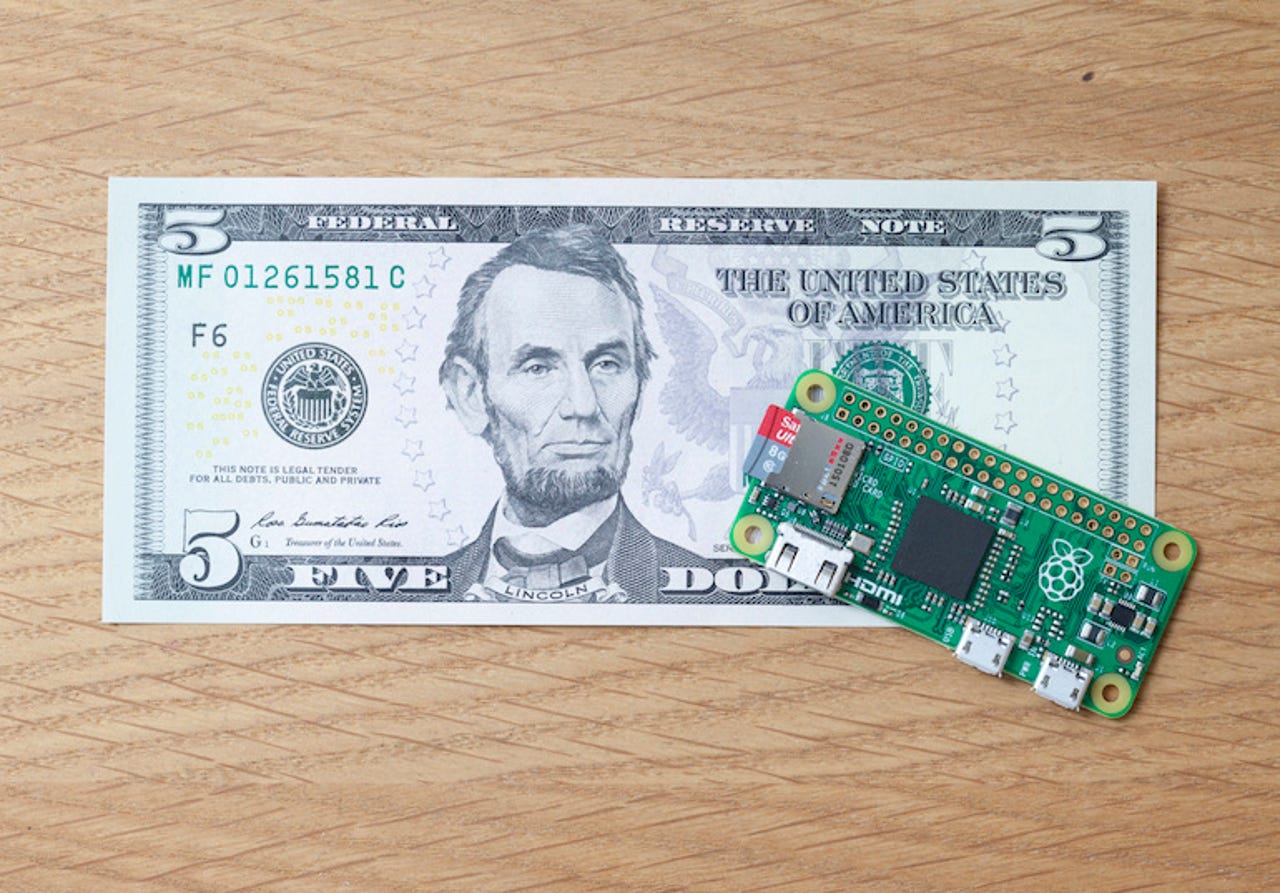BBC Micro Bit and Raspberry Pi Zero: How do they compare?

The BBC Micro Bit is the latest tiny programming board to arrive. As the name suggests, the BBC is hoping that the Micro Bit will follow in the footsteps of the legendary BBC Micro and inspire a new generation of coders and entrepreneurs.
The Micro Bit is being distributed free to a million 11 to 13 year olds across the UK over the next few months. It will be used in school projects but the idea is that the children will own the devices themselves so they can also develop their own projects.
Back in the 1980s the BBC Micro was one of the very few options for would-be coders: now there is an absolute profusion of maker boards and other devices for enthusiasts to try out.
Most famous is the Raspberry Pi, which has now sold around eight million boards in the last four years.
Comparing the Micro Bit to the latest model of Raspberry Pi, which sells for $35, is a little unfair but the Raspberry Pi Zero ($5) is more comparable level in terms of scale and price (the BBC has said the Micro Bit will go on sale to the public as well as the million free devices, but has not revealed for how much). These are pretty much the most entry level devices that you can buy.
They are, despite the similar size and similar objective, quite different creatures: for example the Pi can be programmed directly while code for the Micro Bit has to be written elsewhere and compiled. The Micro Bit also comes with a programmable LED screen and some embedded sensors.
The differences become apparent when you take a look at the specs: the Raspberry Pi has an ARM 11 processor, the sort of thing you'd find in an (older) smartphone. The Micro Bit in contrast runs on a Cortex M0 - one of the smallest ARM processors available.

The diminutive Raspberry Pi Zero
Raspberry Pi Zero specs
- A Broadcom BCM2835 application processor, 1GHz ARM11 core (which runs 40 percent faster than Raspberry Pi 1)
- 512MB of LPDDR2 SDRAM
- A micro-SD card slot
- A mini-HDMI socket for 1080p60 video output
- Micro-USB sockets for data and power
- An unpopulated 40-pin GPIO header
- An unpopulated composite video header
- Dimensions: 65mm x 30mm x 5mm
- Programming: Code can be written and compiled locally. The board runs a variety of Linux-based operating systems, including the Pi's official Raspbian OS.
Specs for the BBC Micro Bit.
BBC Micro Bit
- Nordic nRF51822 Multi-protocol Bluetooth® 4.0 low energy/2.4GHz RF SoC
- 32-bit ARM Cortex M0 microprocessor (16MHz) 16kB RAM, 256kB Flash
- LED matrix 'screen' made up of 25 programmable LEDs Two programmable buttons
- USB Plug (Micro-USB plug) Reset button Status LED
- Accelerometer Compass Bluetooth Smart Technology Antenna AAA Battery Holder Dimensions 40mm x 50mm
- Five Ring Input and Output (I/O) including power (PWR) and ground (GRD). PWR, GRD, I/O x 3. Each I/O ring is programmable to be either analogue or digital. The rings are suitable for crocodile clips or 4mm banana plugs, meaning an external sensor can be connected to measure things like temperature, moisture, proximity to other devices. The PWR and GRD rings supply 3 volts and could be used to power a separate device.
- Edge Connector: 20 pins, 1.27mm pitch and extend 7.62mm from board edge suitable for standard connectors. This allows the micro:bit to be connected to another device, eg Arduino, Galileo, Kano and Raspberry Pi through a standard connector.
- Micro-USB controller: This is controlled by a separate processor and presents the micro:bit to a computer as a memory stick. This means the program can be dragged onto the micro:bit in the same way a file is dragged onto a memory stick.
- Programming: The BBC Micro Bit is programmed through a web-based editing environment. Editors support Microsoft's Touch Develop language, JavaScript, Python, C++ and Blocks. A user writes the programs for the Micro Bit in their preferred language and this is sent to a server to be compiled into code the Micro Bit can run.
Still, if you compare either to the original BBC Micro (a 2 MHz processor, 32k memory and cassette for storage and a £235 price tag) they come off remarkably well thanks to 35-odd years of Moore's Law.
And if the chunky BBC Micro helped inspire a generation, perhaps its tiny, cheaper, much more powerful descendants can do even better.